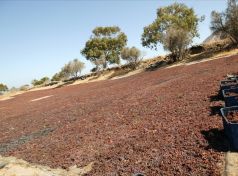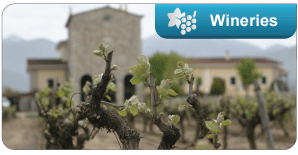Sun-drying the grapes
The method of sun-drying the grapes in order to produce liasta or straw wines (vin liastos) differs from area to area. The basic methods employed are:
• The grapes are laid out on the “liastres”, on specially prepared surfaces.This is historically the most common way of preparing liasta or straw wines (vin liastos). On Santorini, sun-drying the grapes destined for the production of Vinsanto was traditionally done on the sheltered terraces over the arches of the “kanaves” (wineries).
• While still on the vine, the stems of clusters of grapes are “turned” or “creased” so as to slow down the ripening process and thus increase the sugar levels of the fruit. This practice was common throughout the Aegean in older times and was applied to the production of many wines, including the renowned “malvasias oenos”
• The grapes are hung onto special supports positioned on poles and are placed out in the sun, under shaded awnings, or even in well-ventilated storage rooms. The grapes then gradually become desiccated. This is the method employed in the production of the so-called “air-dried” wines of Siatista.
Sun-drying the grapes is the traditional method by which wines are produced in many Greek areas, given the ample sunlight. The main ones are:
• The island of Santorini, where Vinsanto, the wine renowned throughout the centuries, is produced
• Siatista, famous for its liasta (straw or vin liastos) and air-dried wines
• The island of Samos
• The area of Sitia, Crete
• The island of Paros
The liasta or straw wines (vin liastos) that originate in them are excellent representatives of their historic, arid ecosystems and striking examples of the new wines of Greece born of time and the “life-giving” light of the Mediterranean Greek sun.



